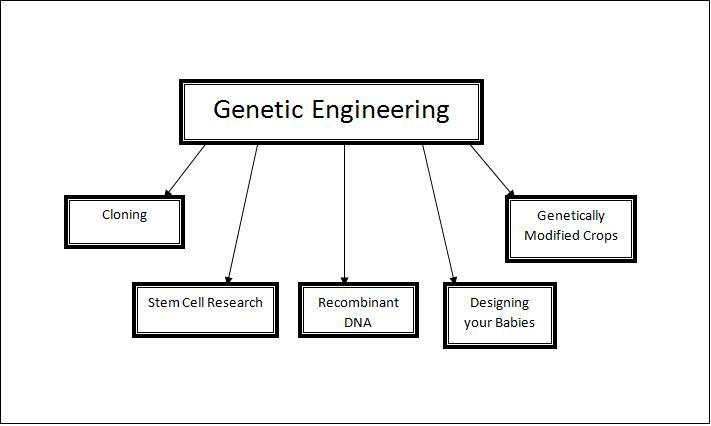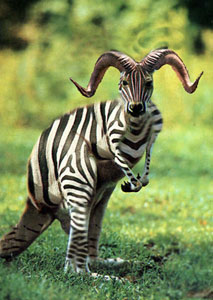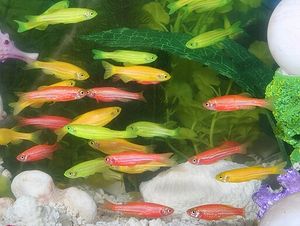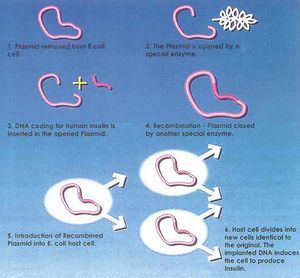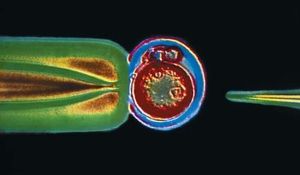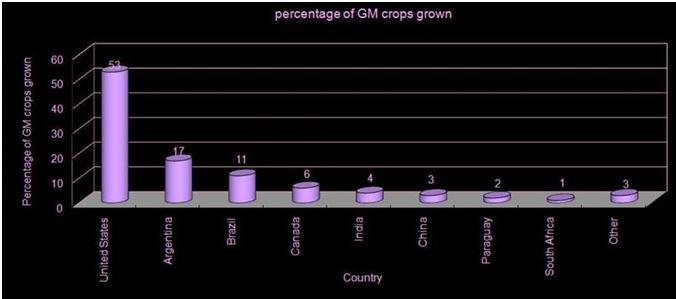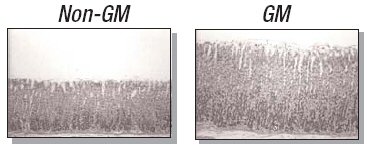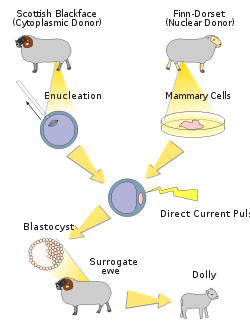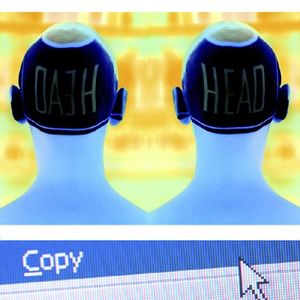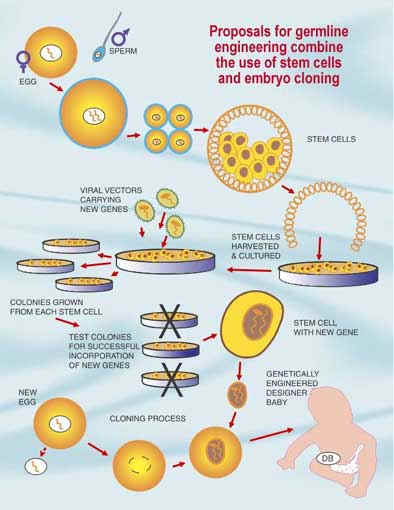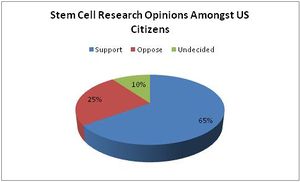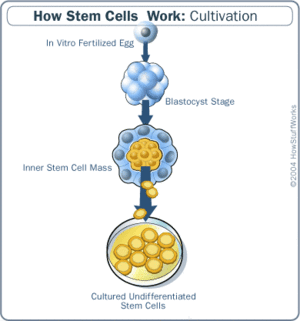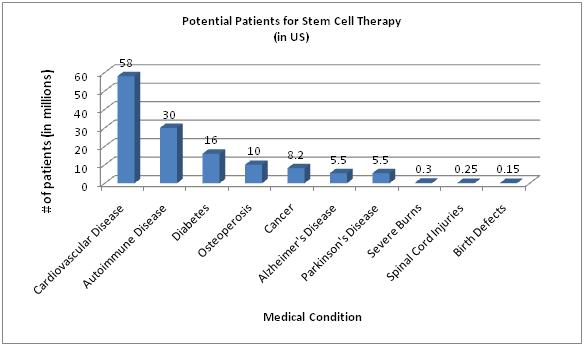The DNA Game
Contents
Genetic Engineering
Team Information
Team Name
"Designer Babes"
Team Members
Paige Richardson
Lina Zhang
Lisa Moule
Gergana Petkova
Lindsey Howard
Introduction
What is Genetic Engineering?
Genetic Engineering originated in the 1960’s and it is essentially the process of changing and modifying the DNA of organisms. The genes in the cells are altered to create a desired DNA strand for whatever purpose. Genes are a collection of DNA, which contain the “code” that determine the functions and reproductive patterns of cells. The DNA from one organism is then implemented into another.
There are three ways to engineer a human being. One way is Cloning, and it is simply copying an existing person. Another possibility is Gene Therapy, or the so called Somatic Cell Manipukation, which consists of inserting genes into the cells of people. A third possible choice is Germline Manipulation, which changes the genes of future generations. DNA is a molecule present in all our cells, which contains all inheritable characteristics. It is not only present in humans, but also in livestock and crops which allows for them to be genetically modified as well. Most of the food we eat has been genetically modified in one way or another, to make it more appealing to the consumers.
DNA is divided into units of genetic information, called genes. In the past three decades, scientists have learned how to mix and match characteristics among unrelated creatures by moving genes from one creature to another. This is why it is called "genetic engineering". There are many fields of research in genetic engineering but we decided to focus on cloning, stem cell research, recombinant DNA, designing your babies and genetically modified crops.
Advantages and Disadvantages
Genetic Engineering can be very beneficial to our society because it has the ability to possibly prevent certain diseases that currently have no cure. However, this process always has the possibility of the unknown, which leaves the feeling of uncertainty in some. With genetic engineering, animals and humans can be designed to be a certain way, and the "perfect" person or animal can be created. In some opinions, this will increase genetic diversity. On the other hand, this also leads to many moral and ethical dilemmas which will be discussed in greater detail in the following article.
Initial Problem Statement and Argument
This issue is extremely controversial and it is difficult to come up with a fully supported and specific stance.
After doing much research and gathering of information on genetic engineering and our specific topics, we have decided that there is great potential for genetic engineering to be a positive technology in both today’s and the future society. However, being that the technology is rather new and lacks proper research in some areas, we would definitely have to conduct more in depth research to gain more facts and information to be fully justified in using this technology. We support the idea of genetic engineering, however we feel that scientists need to investigate and research more thoroughly to minimize the risk to the public (i.e. death, health risks etc.)When this has been done, we feel that genetic engineering would be a very efficient technology and in the future, we hope that this powerful new discovery can be safely integrated into our lives.
Supporters of genetic engineering are in favor of the possible medical advancements and progression in society. Also, in some opinions, genetic engineering provides genetic diversity in the human culture. On the other end of the spectrum, there is a lot of criticism that opposes genetic engineering. Many of these arguments are on moral and ethical issues attached to the technology. And in many cases, genetic engineering has been found to be harmful towards people.
We have provided much information regarding this issue in the article below. After reading our research, we hope that you will be able to form your own stance on this subject.
Recombinant DNA
Recombinant DNA is not a newly engineered technology for genetic engineering. It began in 1973 when Stanley Norman Cohen and Herbert Boyer released their new discoveries in “ Construction of Biologically Functional Bacterial Plasmids in Vitro”. Arber, Nathans and Smith then furthered these discoveries to make them physically possible.
Recombinant DNA is known for the combining of two different strands of DNA. This technique is referred to as "chimera” in animals. By combining the two strands of DNA, specialists are able to create a whole new form of DNA. Scientists usually combine strands of DNA that would usually not be found together. More specifically recombinant DNA in terms of "genetic modification" is used to decipher or alter opposite and unique traits for a certain purpose. Recombinant DNA is different than genetic recombination in that it isn’t formed in a process within the cell.
Recombinant DNA can be used for many unique and specific altering traits in organisms. It is highly recognized in that it can be used for genes that have been identified as important so that these genes can be isolated as supplements in certain applications. These applications in species could be some form of genetic illness in which recombinant DNA plays a role to a new approach in solving complex biology mysteries. Some of these biology mysteries or problems that recombinant DNA contributes to are recombinant vaccines (Hepatitis B), recombinant pharmaceuticals, sickle cell anemia, somatic gene therapy, cystic fibrosis, germ line, insulin and clotting.
In 1921 when it was finally identified that insulin from the pancreas of a cow, pig or even some species of fish could be used in humans so it was mass-produced. Because of the mass-production of biosynthetic “human” insulin one of the greatest breakthroughs in recombinant DNA technology supervened which was the creation of the first medicine approved by the FDA . The creation of recombinant DNA is formed through many different techniques. These techniques are named transformation, non-bacterial transformation and phage introduction. Each method has a different way of explaining how the host cell expresses protein from the recombinant genes. The transformation method explains how a selected piece of DNA is inserted into a vector. Non-bacterial transformation is a little different than transformation in that non-bacterial doesn’t use bacteria as the host. Phage introduction is also quite similar to transformation except that a phage is used instead of bacteria.
As we have seen Recombinant DNA can be used for many great technologies and resources but as always there are still some downsides. In 1975, the "Asilomar Conference" was held to discuss the use of recombinant DNA. The reason for this conference was used to understand and educate about the biohazards of recombinant DNA. It was concluded that the effectiveness of the containment of any experiment involving recombinant DNA should match the risk as closely as possible. Many risks include viruses developing antibiotic resistance; environmental concerns, ethical dilemmas and germ line treatment going from treatment treating diseases to a method for picking the traits you want your child to have. Although there are many legitimate positive effects of recombinant DNA such as improved medicines, improved livestock, prevention of genetic diseases, lowering of medical costs and treatment of pre-existing conditions such as cancer.
Through just the simple re-creation of a DNA strand by adding a different or unique strand of DNA, recombinant DNA has been a great solution to many medical and biology mysteries. In the future recombinant DNA holds many possibilities on the new strategies in human and animal development. Without recombinant DNA many diseases would not have been fought and species improved.
GM Crops
What are GM crops?
The term "genetically modified" refers to the alteration of genetic material. Simply put, it means that the genes of one organism have been "cut out" then "pasted" into another organism. These GM plants are often created to be able to resist disease, so that the use of pesticides can be reduced or eliminated. Also, GM crops can be made to have more desirable characteristics such as hardier texture, higher nutritional value and faster growth.
Cultivating GM crops
In 2006, 10 million farmers in 22 countries harboured 252 million acres of GM crops. The mass majority of these crops were soybeans, corn, cotton, canola, and alfalfa; all herbicide and insect-resistant. Current developments are leading to bananas that produce human vaccines against infectious diseases such as hepatitis B; fish that mature more quickly; cows that are resistant to bovine spongiform encephalopathy (mad cow disease); fruit and nut trees that ripen years earlier than they do now, and plants that produce new plastics with unique properties. The countries who participated the most in the cultivating of GM crops are the United States (53%), Argentina (17%), Brazil (11%), Canada (6%), India (4%), China (3%), Paraguay (2%) and South Africa (1%). These 8 countries combined grew 97% of all GM crops globally.
Benefits and concerns
Like all recent technologic developments, there are pros and cons to harvesting GM crops.
Benefits
- GM crops are enhanced in taste and quality
- crops mature in a much shorter time
- there is an increased nutritional value
- crops are more resistant to diseases and pests.
- increased food security for growing populations.
- improved production for developing countries, which leads to better economic standings in third world countries.
In a recent UN estimate, the world's population is said to grow to 9.3 billion by the year 2050; 400 million more than previously estimated. One of the main concerns for the world at that time will be to ensure that food will be available for everyone. In order to prevent famine, food production must increase globally. Currently, the lowest productivity of crops are in developing countries and in tropical areas. With GM crops, the productivity in poor countries have already been increasing, as seen in Argentina, China, Mexico, among many. With continued growth, these developing countries will benefit economically and reduce their dependence on the industrialised world. Tropical areas are difficult to grow crops due to the tremendous amount of pests, plant disease and poor soil. GM crops developed specifically for tropical areas would alleviate these problems and ultimatelly increase the productivity.
Pests and insect damage is a prominent problem in tropical areas; an estimated 15% of pre-harvest food loss in developing countries are due to this reason. That means with insect resistant GM crops, farmers in developing countries could see an increase of at least 15%.
Without having access to GM technology, the only alternative for Third World countries to increase food production would be to use more fertilisers, insecticides and herbicides–certainly not beneficial to the environment. For virus-, insect- and herbicide-resistant plants, an average increase in yield of 5–10%, up to 40% saved on herbicides and savings of US$ 60 to 120 per acre on insecticides have been reported
Concerns
Research on long-term effects of GM crops on human health have not been conducted and therefore, possible health risks have not all been investigated fully.
GM allergens have increased tremendously
- After the introduction of GM soy in the UK, soy allergies increased dramatically by 50%.
- In a medical experiment, a human test showed a skin prick allergic-type reaction to GM soy, but not to natural soy.
- When cooked, the level of soy allergens is as much as 7-times higher in GM soy compared to non-GM soy.
- GM soy also contains an unexpected allergen-type protein not found in natural soy
GM crops causes liver and other organ defects
- Rats fed GM potatoes had smaller, partially atrophic livers
- Rats who were fed GM canola had increased liver mass of 12-16%, this makes the liver weaker and commonly leads to AIDS, cancer and congestive heart disease.
- The stomach lining of rats fed GM potatoes showed excessive cell growth, a condition that may be a precursor to cancer.
- Rats also had damaged organs and immune systems.
GM soy leads to reproductive problems, and infant mortality
- Male rats and mice fed GM soy showed changes in their testicles; the mice had altered young sperm cells.
- Many offspring of female rats fed GM soy were considerably smaller, and more than half died within three weeks (compared to 10% of the non-GM soy controls)
- GM crops linked to sterility, disease, and death
- When sheep grazed on Bt cotton plants after harvest, within a week 1 in 4 died. Shepherds estimate 10,000 sheep deaths in one region of India.
- Farmers in Europe and Asia say that cows, water buffaloes, chickens, and horses died from eating Bt corn varieties
- About two dozen US farmers report that Bt corn varieties caused widespread sterility in pigs or cows
- Milk from rbGH-treated cows contains an increased amount of the hormone IGF-1, which is one of the highest risk factors associated with breast and prostate cancer, among other forms of cancer.
Functioning GM genes remain inside you
Even long after we stop eating GM foods, we may still have their GM proteins produced continuously inside us.
- If the antibiotic gene inserted into most GM crops were to transfer, it could create super diseases, resistant to antibiotics.
- If the gene that creates Bt -toxin in GM corn were to transfer, it might turn our intestinal flora into living pesticide factories.
- Animal studies show that DNA in food can travel into organs throughout the body, even into the fetus.
Cloning
Cloning is the process of producing a genetically identical individual through nonsexual means. There are many different types of cloning, some are natural and others are achieved through scientific procedures. Most plants are considered clones of each other since they derive from the same individual. Through a natural process called apomixis, organisms such as grapes are cloned. Parthenogenesis is another natural form of cloning animals or insects such as fire ants. Naturally cloned organisms are not normally a controversial topic, but when a scientific procedure is used many ethical issues are brought up. In regards of artificial cloning, there are three types; DNA cloning, reproductive cloning, and therapeutic cloning. DNA cloning uses a piece of DNA from one organism and places it in another for copies of genes. Reproductive cloning is used to create an animal that has the same DNA as an existing or previously existing animal. Therapeutic cloning is the production of human embryos for scientific research. It is used to harvest stem cells for research and disease, not to create human clones.
The first cloned mammal was a sheep named Dolly. She was cloned in 1996 through the process of Somatic cell nuclear transplant (reproductive cloning). This is when a nucleus of a cell is removed and fused with a donor egg by a jolt of electricity. The new cell then multiplies and produces a new organism. The success of this cloning took many attempts and scientists have said that it only happens by pure chance. Even though, scientists have proceeded to attempt to clone humans. There were a few successful attempts, but all of the embryos were destroyed. Too many objections and controversial stances have forced human cloning to become illegal in most countries.
Human cloning has been considered for the use of curing diseases. If scientists can produce human clones to use their organs as organ transplants then the clones could be very useful. But many people object to using the clone’s lives only for medical advantages and denying them the freedom to live. Scientists are trying to avoid this by cloning only the specified organs instead of human beings. Many religious organizations are opposed to all kinds of cloning, stating that a life begins at contraception. Also, if cloning did become a legal, common procedure, then populations would rise drastically and thousands of people would want a clone of themselves. Who wouldn’t want to send their clone to school or work while they stayed home and slept in? Furthermore, cloning produces an exact replica of an organism, and would therefore lower diversity. It may also lower the value of a human life. If you have a clone, what does it matter if the original dies?
Overall, cloning is a unique scientific process that could change the world if it was an everyday procedure. There are different views on the topic and many strong controversial stances. This procedure will most likely not be common anytime soon, but that could change if safety and chance increase. It is up to you to decide our future.
Designer Babies
Scientists are predicting that in the near future parents should be able to pick their children’s genes, and play around with their physical characteristics and personality traits. They can choose to make their child a great athlete, extra intelligent, unusually healthy, or just very good looking. Some of these improvements have already been done with mice, and the time when engineering human beings becomes possible, is approaching very fast.
At the Case Western Reserve University at Cleveland in Ohio, there have been hundreds of “super mice” genetically engineered to run faster and further, learn faster, and with a longer life expectancy. This was done by altering a metabolism gene which is shared with humans, which makes this possible to be done with people as well. Of course there were side effects , like aggressiveness for example, which makes it too dangerous to use on humans yet.
One way to make a designer baby is by modifying an embryo’s DNA and introducing it into a womb by In Vitro Fertilization (IVF). One of the safety concerns about this technology includes the fact that the genes being introduced to the genome might arrive in a way that disrupts the function of another gene crucial for survival, or cripple it and create side effects with horrible outcomes. Many traits are also influenced by multiple genes, which makes it even harder to influence on all those genes at once.
Another possible technology is Preimplantation Genetic Diagnosis (PGD), which is used to screen for genetic defects and also to reduce the risk of passing serious genetic disorders on to one’s children. The drawbacks of this technology are that it used embryos created by IVF, lacking the cells containing the disease, which might have implications for the well-being of the baby.
A third possible technology, for engineering a baby is Germline Manipulation. This consists of altering sperm and egg cells, which allows the individual to pass on the new characteristics to their children. But again, any small mistake could alter one’s gene, and produce side effects like increased susceptibility to drug addiction for example, which would be passed on to the next generation.
Another method is cutting the “bad” part of the gene and replacing it with a “good” one by adding DNA to a plate of embryonic cells. However, scientists would rather add extra genes, then alter the existing ones. This is done by building an artificial chromosome which would have no genes of its own, but instead would carry sets of genes designed to enhance the intended characteristics.
A part of engineering your baby is choosing thier sex. There are procedures that separate the Y chromosome, which produces males, form the X chromosome, which produces females, and fertilize the egg with the needed chromosome. The problem with this is that the chance it works is approximately 90%, and if it fails, the parents are very likely to get an abortion, which takes away an innocent life.
Stem Cell Research
What are Stem Cells?
Stem cells are unspecialized cells in the human body. The main function of stem cells is to repair damaged cells in the body. Stem cells can be coaxed to become any kind of specialized cell. There are over 200 kinds of specialized cells in the human body, and stem cells can be trained to become any of these. Stem cell research is believed to provide medical advancement, and to possibly cure some serious diseases such as Parkinson’s, diabetes, heart disease, Alzheimer’s and arthritis. Stem cells are able to become specialized and repair these damaged or diseased tissues.
History
The concept of stem cell research was developed about 20 years ago, first using mouse embryos. These discoveries lead to scientists isolating human embryos in 1998.
Adult Stem Cells versus Embryonic Stem Cells
There are two main kinds of stem cells that scientists use while researching. Adult stem cells come from a human adult. Adult stem cells are typically already somewhat specialized, which means they may not be able to become any kind of cell. If a human receives their own adult stem cells, it is likely that an immune system rejection will not occur. Also, with adult stem cells, tumours are very rare to form, and there is no harm done to the donor. The downside to adult stem cells is that there is a limited quantity available, and the cells typically have a shorter life span than embryonic stem cells.
Embryonic stem cells are more desired by scientists. The best kinds of stem cells come from human embryos. However, obtaining the embryonic stem cells destroys the embryo and it is then unable to continue growing to become a fetus. This creates a very controversial ethical battle. Embryonic stem cells can proliferate and become any kind of specialized cell, while adult stem cells cannot. An endless supply of stem cells can be produced from any one embryonic stem cell. In contrast to adult stem cells, embryonic stem cells can sometimes be rejected after being transplanted. Also, these types of cells are capable of forming tumours. The big moral disadvantage of embryonic stem cell research is that a potential human life is being destroyed. For people who believe that life begins at conception, a blostocyst (where the stem cell come from), would be considered a human life, and destruction of this is considered immoral.
Conclusion
In total, genetic engineering is a technology that has been debated time and time again. Even though it is a recent discovery, it provokes many conflicts and discussions in our developing world. We have seen many positive sides, such as combating cancer, creating new medical pharmaceuticals, and improving technology. Yet as we have seen throughout our research, many new technologies in genetic engineering have caused a great uproar. Through the study of recombination DNA, GM crops, cloning, baby engineering, and stem cell research, we have concluded that the development of genetic engineering is a controversial topic. Through our research we have realized that if it is used in a beneficial way and causes little hazard to the general public then genetic engineering is something we should consider to be used in the future of our society.
References
Paige Richardson
Recombinant DNA Technology http://www.youtube.com/watch?v=x2jUMG2E-ic
Recombinant DNA Information http://en.wikipedia.org/wiki/Recombinant_DNA
Recombinant DNA and Gene Cloning http://users.rcn.com/jkimball.ma.ultranet/BiologyPages/R/RecombinantDNA.html
The Basics of Recombinant DNA http://www.rpi.edu/dept/chem-eng/Biotech-Environ/Projects00/rdna/rdna.html
Recombinant DNA Prof Peter Chantler http://www.rvc.ac.uk/review/DNA_1/1_Mol_Cloning.cfm
University of Delaware: recombinant DNA http://www.present.udel.edu/biotech/rDNA.html
Chemistry Explained :: Pr-Ro Recombinant DNA http://www.chemistryexplained.com/Pr-Ro/Recombinant-DNA.html
GloFish Picture [[1].
Recombinant DNA Structure [[2]].
Insulin Protein Re-creation [[3]].
Lina Zhang
CBC News Online Article on GM food concerns http://www.cbc.ca/news/background/genetics_modification/
Genetic Modification of Domesticated Plants and Animals http://www.fbae.org/special-topics_biotech_basics_gm_ge3.html
Genetically Modified Foods and Allergens http://www.globalresearch.ca/index.php?context=va&aid=7277
Human Genome Program: Genetically Modified Foods and Organisms http://www.ornl.gov/sci/techresources/Human_Genome/elsi/gmfood.shtml
GM crops: hope for developing countries http://www.nature.com/embor/journal/v2/n4/full/embor436.html
The Documented Health Risk of Genetically Engineered Foods http://www.seedsofdeception.com/Public/AboutGeneticallyModifiedFoods/HealthRisksBrochure/index.cfm
Status of Commercialized Biotech/GM Crops: 2007 http://www.isaaa.org/resources/publications/briefs/37/executivesummary/default.html
Runaway GM Crops Can Pose Food-Safety Risks http://www.uoguelph.ca/news/2006/11/runaway_gm_crop.html
Reader’s Digest: What You Should Know About GM Crops http://www.readersdigest.ca/mag/2000/09/think_gm.html
Report Shows GM Crops Generating Global Economic, Environmental and Social Benefits http://www.monsanto.co.uk/news/ukshowlib.phtml?uid=6880
Lisa Moule
Genetic Science Learning Center and Cloning Photo http://learn.genetics.utah.edu/content/tech/cloning/
Cloning Fact Sheet http://www.ornl.gov/sci/techresources/Human_Genome/elsi/cloning.shtml
Cloning Poll http://www.euthanasia.com/clonepoll2002.html
Cloning Poll http://www.euthanasia.com/clonepol.html
How Cloning Works http://science.howstuffworks.com/genetic-science/cloning.htm
Sheep Cloning Diagram http://science.howstuffworks.com/genetic-science/cloning3.htm
Cloning Information http://plato.stanford.edu/entries/cloning/
Cloning Wiki and Diagram http://en.wikipedia.org/wiki/Cloning
Dolly the Sheep Wiki Info http://en.wikipedia.org/wiki/Dolly_the_sheep
Cloning Head Picture http://www.buzzle.com/articles/pros-and-cons-of-cloning.html
Cloned Babies Picture [[4]].
Zebra Kangaroo Picture [[5]].
Gergana Petkova
Cloning Comic Strip in Conclusion: [[6]].
Presentation Video: http://www.youtube.com/watch?v=4PKjF7OumYo&feature=related
Presentation Music: http://www.youtube.com/watch?v=5MBgBu5OXTw
Genetically Egineered Mice Info: http://www.infowars.net/articles/november2007/021107Genetic.htm
Determining the Sex of Your Child Procedure: http://www.leaderu.com/orgs/probe/docs/humgeneng.html
Technologies for Altering DNA: http://www.netlink.de/gen/Zeitung/2000/000305.html
Technologies for Altering DNA: http://www.actionbioscience.org/biotech/agar.html
Technologies for Altering DNA: http://www.organicconsumers.org/patent/gehuman2.cfm
Issues with Altering DNA: http://www.geneticsandsociety.org/article.php?id=129
Germline Manipulation: http://online.sfsu.edu/~rone/GEessays/engineerhumans.html
Lindsey Howard
Intro Info Genetic Engineering: http://www.biology-online.org/2/13_genetic_engineering.htm
General Intro Info: http://www.cqs.com/gmo.htm
Genetic Engineering Info: http://student.britannica.com/comptons/article-256532/genetic-engineering
Stem Cell Pros/Cons: http://biotech.about.com/od/bioethics/i/issuestemcells_2.htm
Stem Cell Pros/Cons: http://www.stemcellresearchfacts.com/pros_cons.html
Stem Cell Info: http://www.stemcells.ca/
Stem Cell Info: http://www.kumc.edu/stemcell/intro.html
Stem Cell Research Basics: http://www.ama-assn.org/ama/pub/category/13335.html
Stem Cell Research Info: http://stemcells.nih.gov/info/basics/basics1.asp
Stem Cell Info: http://www.stemcelltherapies.biz/learning/what_is_a_stem_cell.asp
Statistics for Excel Chart: [[7]]
Stem Cell Picture: [[8]]
